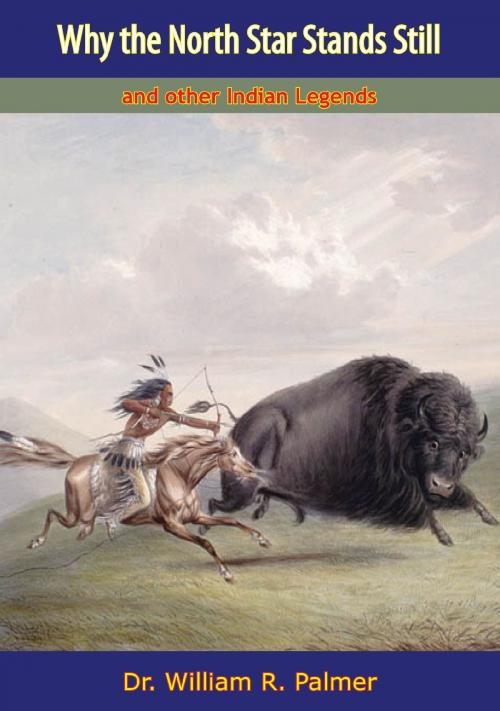Why the North Star Stands Still, and other Indian Legends
Nonfiction, Social & Cultural Studies, Social Science, Cultural Studies, Native American Studies, History, Americas, United States, 19th Century, Biography & Memoir| Author: | Dr. William R. Palmer | ISBN: | 9781789120288 |
| Publisher: | Borodino Books | Publication: | February 27, 2018 |
| Imprint: | Borodino Books | Language: | English |
| Author: | Dr. William R. Palmer |
| ISBN: | 9781789120288 |
| Publisher: | Borodino Books |
| Publication: | February 27, 2018 |
| Imprint: | Borodino Books |
| Language: | English |
No one knows how old the charming legends in this unusual book really are. By word of mouth they have been handed down from generation to generation among the Pahute Indians, one of the most ancient and primitive tribes on this continent, who settled centuries ago in what is now the state of Utah.
In the main, the legends tell of the origin of all living things—which to the Indian includes the trees, the flowers and grass, the wind, the water, the moving clouds that suddenly darken into storm over the mountains, as well as man and the animals of this earth. They also tell why living things behave as they do.
Here, for example, is the Pahute version of why the sun rises cautiously, why the coyote looks up when he howls, how the beaver lost the hair on his tail, how the flowers got their colors, and of many more interesting phenomena. In language of great beauty and simplicity the stories explain how the Pahute gods, Tobats and his younger brother Shinob, created the earth and ruled all its inhabitants.
The author, William R. Palmer, who was taken into the tribe as a token of gratitude for his work in securing better living conditions for the dwindling number of Pahutes in Utah today, listened to the legends as they are still related around Pahute campfires. At last (and only after his Indian brothers were certain he would not misinterpret them) he obtained their permission to translate the stories into English and so to make a book of them.
Here then is a rare collection in which young and old alike are sure to find hours of enjoyment. This book makes a significant contribution to that all-too-scant segment of our literature—the folk tales of the first Americans.
For this and other historical contributions Dr. Palmer was given the highest recognition of an honorary doctorate degree by Utah State University.
No one knows how old the charming legends in this unusual book really are. By word of mouth they have been handed down from generation to generation among the Pahute Indians, one of the most ancient and primitive tribes on this continent, who settled centuries ago in what is now the state of Utah.
In the main, the legends tell of the origin of all living things—which to the Indian includes the trees, the flowers and grass, the wind, the water, the moving clouds that suddenly darken into storm over the mountains, as well as man and the animals of this earth. They also tell why living things behave as they do.
Here, for example, is the Pahute version of why the sun rises cautiously, why the coyote looks up when he howls, how the beaver lost the hair on his tail, how the flowers got their colors, and of many more interesting phenomena. In language of great beauty and simplicity the stories explain how the Pahute gods, Tobats and his younger brother Shinob, created the earth and ruled all its inhabitants.
The author, William R. Palmer, who was taken into the tribe as a token of gratitude for his work in securing better living conditions for the dwindling number of Pahutes in Utah today, listened to the legends as they are still related around Pahute campfires. At last (and only after his Indian brothers were certain he would not misinterpret them) he obtained their permission to translate the stories into English and so to make a book of them.
Here then is a rare collection in which young and old alike are sure to find hours of enjoyment. This book makes a significant contribution to that all-too-scant segment of our literature—the folk tales of the first Americans.
For this and other historical contributions Dr. Palmer was given the highest recognition of an honorary doctorate degree by Utah State University.















